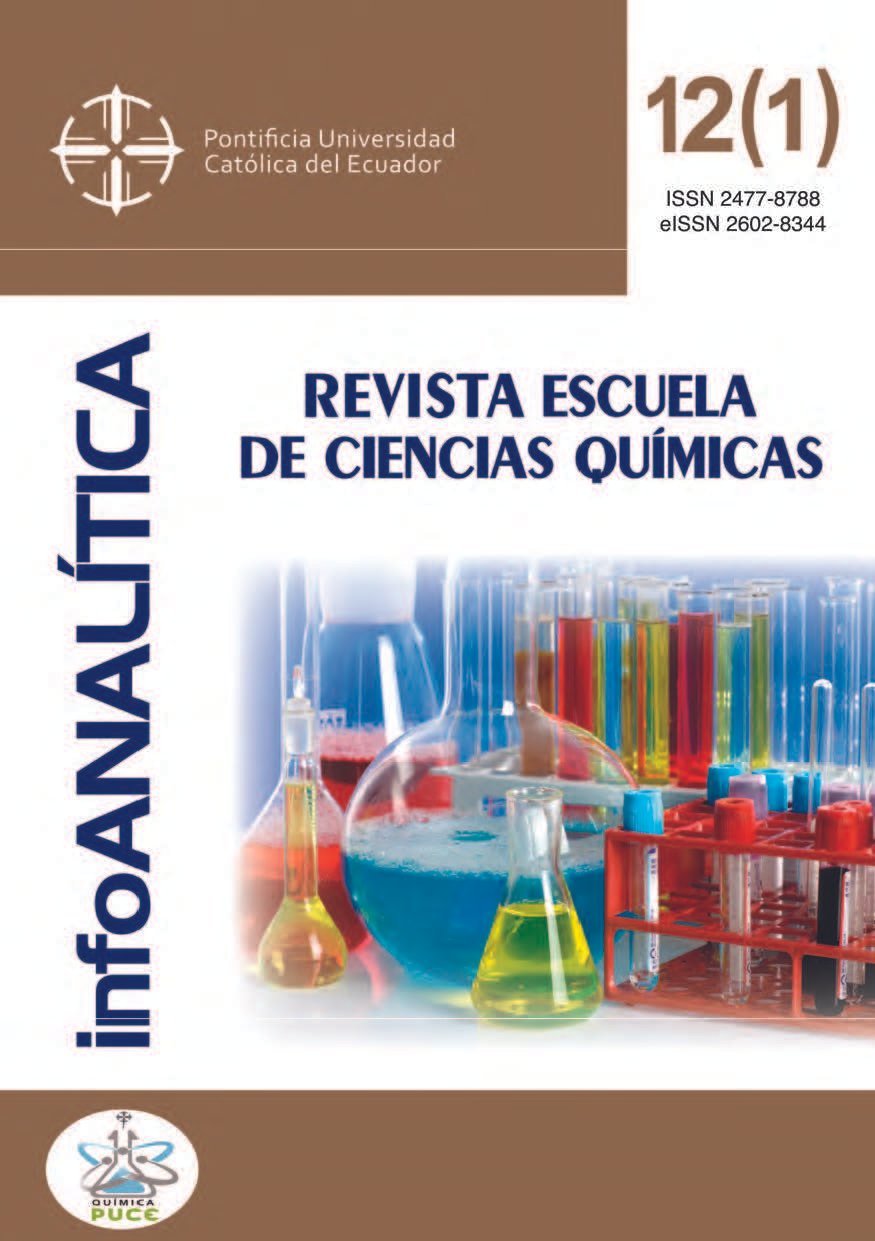DETERMINATION OF THE ANTIOXIDANT CAPACITY IN VITRO OF A CREAM MADE WITH ISOLATED CANNABIDIOL EXTRACT OF Cannabis sativa L. (HEMP)
Main Article Content
Abstract
The present investigation determined the antioxidant activity of a facial antioxidant cream, made with Cannabidiol (CBD) isolated extract. To establish the antioxidant capacity, the 2,2-Diphenyl-1-Picrylhydrazil (DPPH) method was used to aply a triplicate design, in addition, ascorbic acid (AA) was used as a positive control. Antioxidant capacity of the extract and the cream formulated with the CBD extract were terminated spectrometrically, the wavelength used was 517 nm. Seven creams with different CBD concentrations, ranging between 0,5 and 10%, were developed. The percentage of inhibition of the DPPH radical of the CBD extract was 91.93% and for the cream it was 83,00% at the highest concentration of 10,00 mg/mL in both cases. Likewise, the IC50 values of the CBD extract and the cream were established with values of 1.8803±0.188 mg/mL and 2.340±0.034 mg/mL respectively. The present study promotes further investigation of a correct use of CBD isolate extract in cosmetic products with antioxidant benefits.
Downloads
Article Details
- The authors agree to respect the academic information of other authors, and to assign the copyrights to the journal infoANALÍTICA, so that the article can be edited, published and distributed.
- The content of the scientific articles and the publications that appear in the journal is the exclusive responsibility of their authors. The distribution of the articles published in the infoANALÍTICA Journal is done under a Creative Commons Reconocimiento-CompartirIgual 4.0 Internacional License.
References
Ansari, K. (1996). Free radical induced disease. Journal of the Indian Medical Association, 94(6), 238–239.
Avello, M. y Suwalsky, M. (2006). Radicales libres, antioxidantes naturales y mecanismos de protección. Atenea (Concepción), 494, 161–172. https://doi.org/10.4067/s0718-04622006000200010
Delanty, N. y Dichter, M. A. (1998). Oxidative injury in the nervous system. Acta Neurologica Scandinavica, 98(3), 145–153. https://doi.org/10.1111/J.1600-0404.1998.TB07285.X
González, M. C., Betancourt, M. y Ortiz, R. (2000). Daño Oxidativo y Antioxidantes. Bioquimia, 25(1), 3–9. https://www.redalyc.org/pdf/576/57611797001.pdf
Hacke, A., Lima, D., de Costa, F., Deshmukh, K., Li, N., Chow, A. y Kerman, K. (2019). Probing the antioxidant activity of Δ9- tetrahydrocannabinol and cannabidiol in cannabis sativa extracts. Analyst, 144(16):4952-4961. doi: https://doi.org/10.1039/c9an00890j
Kitamura, M., Kiba, Y., Suzuki, R., Tomida, N., Uwaya, A., Isami, F. y Deng, S. (2020). Cannabidiol Content and In Vitro Biological Activities of Commercial Cannabidiol Oils and Hemp Seed Oils. Medicines, 7(9), 1-11. https://doi.org/10.3390/medicines7090057
Koch, W., Zagórska, J., Marzec, Z. y Kukula-Koch, W. (2019). molecules Applications of Tea (Camellia sinensis) and Its Active Constituents in Cosmetics. Molecules, 24(23), 4277. https://doi.org/10.3390/molecules24234277
Lakatos, M., Obeng, S., Dunne, J. y Tian, F. (2022). The Biological Activity of Tea Tree Oil and Hemp Seed Oil. Applied Microbiology, 2(3), 534–543. https://doi.org/10.3390/applmicrobiol2030041
Maldonado Saavedra, O., Jiménez Vázquez, E. N., Guapillo Vargas, M. R. B., Ceballos Reyes, G. M. y Méndez Bolaina, E. (2010). Radicales libres y su papel en las enfermedades crónico-degenerativas Free radicals and their role in chronic-degenerative diseases. Revista Médica de La Universidad Veracruzana, 32–39. https://www.medigraphic.com/pdfs/veracruzana/muv-2010/muv102e.pdf
Medina, K. y Echaiz, M. de los M. (2019). Actividad antioxidante y fotoprotectora UVB in vitro de una crema dermocosmética elaborada con el extracto acuoso liofilizado del tubérculo de Dioscorea trifida L.f. (sacha papa morada) [Tesis, Universidad Nacional Mayor de San Marcos]. https://cybertesis.unmsm.edu.pe/bitstream/handle/20.500.12672/10550/Medina_hk.pdf?sequence=3&isAllowed=y
Mencias H. y Salazar T. (2018). Estudio fitoquímico, actividad antioxidante de especies de orquídeas de los géneros epidemdrum, oncidium y caucaea. [Tesis, Universidad Politécnica Salesiana] http://dspace.ups.edu.ec/handle/123456789/15932
Pino, S.. Espinoza, L., Jara-Gutiérrez, C., Villena, J., Olea, A.F. y Díaz, K. Study of Cannabis Oils Obtained from Three Varieties of C. sativa and by Two Different Extraction Methods: Phytochemical Characterization and Biological Activities. Plants, 12(9), 1772. https://doi.org/10.3390/plants12091772
Posada Bustamante, B. (1994). La degradación de los plásticos. Revista Universidad EAFIT, 30(94), 67–86. http://repository.eafit.edu.co/handle/10784/16534
Rojas, F. y Ramirez, G. (2021). Modelo de negocio para la fabricación de una crema fitoterapeutica para la sintomatología consecuente de la rosácea, a partir del cannabidiol (CBD) extraído de la planta (Cannabis sativa) [corporación tecnológica de Bogotá]. https://repository.udca.edu.co/bitstream/handle/11158/4426/MODELO%20DE%20NEGOCIO%20PARA%20LA%20FABRICACIÓN%20DE%20UNA%20%20CREMA%20FITOTERAPEUTICA%20.pdf?sequence=1&isAllowed=y
Vanegas, A. (2020). Aceite de semillas de Cannabis sativa L.: sus aplicaciones y regulación en [Tesis, Universidad de Cartagena]. https://repositorio.unicartagena.edu.co/bitstream/handle/11227/14592/ALFONSOVANEGAS-TrabajofinalMonografia.pdf?sequence=1&isAllowed=y

